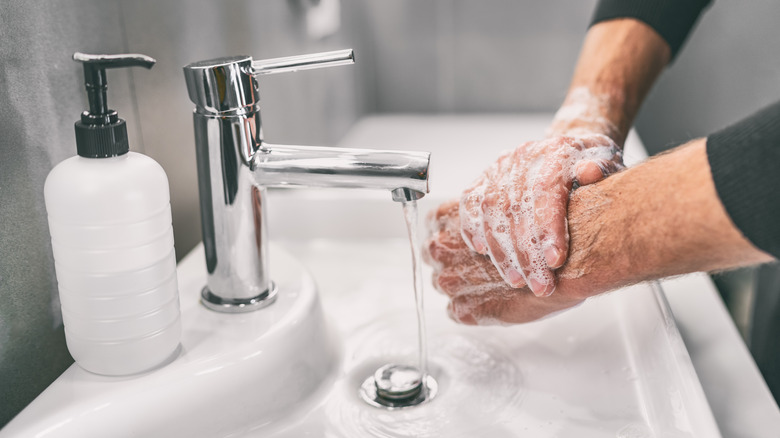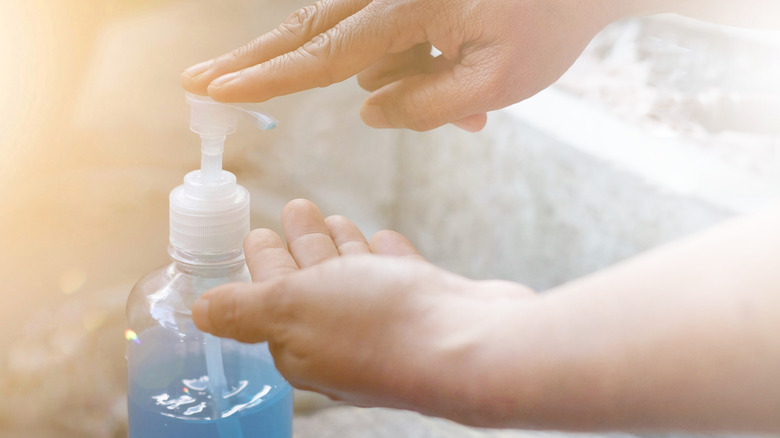Does Water Temperature Matter When Washing Your Hands?
With cases of the Delta variant of COVID-19 on the rise in some states, using good hygiene to prevent the virus spread is imperative. And handwashing is one of the many ways to cut down on germs. The Centers for Disease Control and Prevention (CDC) recommends washing your hands often with soap and water for at least 20 seconds, especially if you have been in a public place or in contact with a lot of germs.
But what isn't mentioned as frequently is what the water temperature should be when washing your hands. According to the CDC's handwashing guidelines, warm and cold temperatures are equally effective for the removal of microbes, the tiny living organisms that can cause disease (via CDC). However, warm water can cause negative impacts like skin irritation, according to the CDC. It also uses more energy to heat water, meaning cooler water is more environmentally friendly.
The science behind handwashing water temperatures
A 2017 Rutgers University study echoed the CDC, finding that cold water removed the same amount of bacteria as warm water. The study also found that bacteria was eliminated by washing hands for as little as 10 seconds (via Rutgers University). In contrast, adding to the handwashing temperature debate is the U.S. Food and Drug Administration's advice that water should be 100 degrees Fahrenheit for handwashing, in order to fully remove oils that might harbor bacteria (via ABC7 Chicago). It's unclear if this is for hygiene or for food safety reasons.
If you are still unsure about what temperature is best, go with your preferred temperature and use enough water to lather the soap. If there is a water contamination concern, use hand sanitizer of at least 60% alcohol as a second line of defense, according to the CDC. You can also use the trick of humming the "Happy Birthday" song while you wash to make sure you've done your full 20 seconds.


